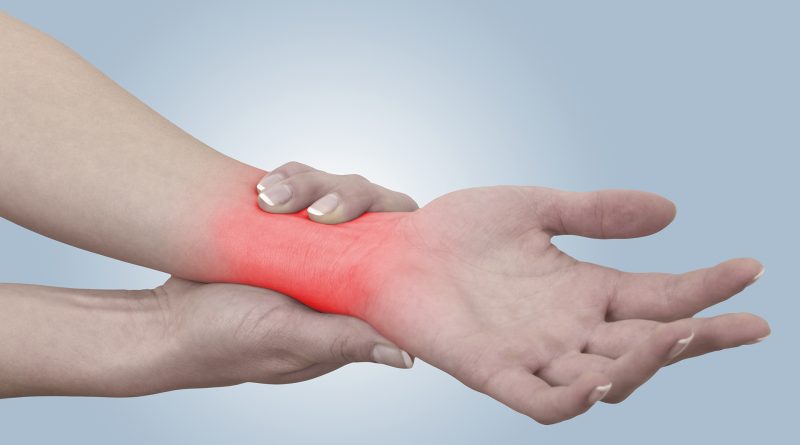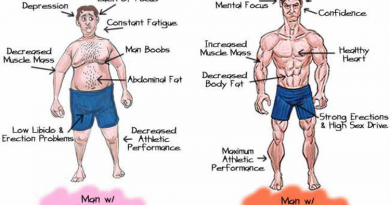What is Rheumatoid arthritis? Symptoms and Treatment
Rheumatoid arthritis comes to light when the immune system attacks the synovium, the lining of the membranes that surround the joints.
Rheumatoid Arthritis is a disease of chronic inflammatory, autoimmune nature, characterized by involvement of multiple joints and presenting various unspecific general symptoms and extra-articular manifestations. Without adequate treatment, the disease can cause, in advanced stages, significant physical limitations, as well as a marked deterioration in the quality of life.
In this way, on October 1, National Rheumatoid Arthritis Day is celebrated, with the aim of raising awareness in society about this disease, characterized mainly by joint inflammation.
According to data from the Spanish Society of Rheumatology, 0.5% of the Spanish population suffers from this pathology, which means that around 200,000 people in Spain have rheumatoid arthritis. A disease whose origin is still unknown.
On the other hand, two-thirds of patients with Rheumatoid Arthritis are women and it usually appears between 45 and 55 years of age. There is a rare variant: Juvenile Rheumatoid Arthritis. This appears during childhood. These patients present with arthritis, with swelling and pain in the affected joints.
Symptoms
The main symptoms of Rheumatoid Arthritis are the following:
- Sensitive, hot, and swollen joints.
- Joint stiffness that worsens in the morning and after inactivity.
- Tiredness, fever, and loss of appetite.
Early rheumatoid arthritis first begins to affect the smaller joints, especially those that join the fingers with the hands, as well as the toes with the feet.
As the disease progresses, the symptoms spread to the wrists, knees, ankles, elbows, hips, and shoulders, in this way, in most cases, the symptoms occur in the same joints in both sides of the body.
Currently, 40% of people with arthritis also experience signs and symptoms that do not involve the joints. For its part, the disease can also affect non-articular parts, such as skin, eyes, lungs, heart, kidneys, salivary glands, nervous tissue, bone marrow, or blood vessels.
Periods of increased disease activity, called flares, alternate between periods of relative remission, when swelling and pain dissipate or disappear. Over time, rheumatoid arthritis can cause the joints to deform and slip out of place.
Causes of Rheumatoid Arthritis
Rheumatoid Arthritis comes to light when the immune system attacks the synovium, the cladding of the membranes surrounding the joints. As a result, the resulting inflammation thickens the synovium, which can ultimately destroy the cartilage and bone within the joint .
In this way, the tendons and ligaments that hold the joint together weaken and stretch, causing the joint to lose its shape and alignment.
Doctors have not yet discovered what triggers this process, although it seems likely that it is a genetic component . Although genes do not cause rheumatoid arthriti-s, they can make you more vulnerable to environmental factors, such as infection with certain viruses and bacteria, that can trigger the disease.
Risk factors
The main factors that can increase the risk of suffering from rheumatoid arthritis are:
- Sex. Men are less likely than women to develop arthritis
- Age. It can occur at any age but most often begins in middle age.
- Family background. If a family member has rheumatoid arthritis, your risk of developing the disease may be higher.
- Smoking is also associated with greater severity of the disease.
- Environmental exposure. Some exposures, such as asbestos or silica, can increase the risk of developing Rheumatoid Arthritis.
- Obesity. People, especially women up to 55 years of age, who are overweight or obese appear to be at higher risk of developing Rheumatoid Arthritis.
In this way, on October 1, National Rheumatoid Arthritis Day is celebrated, with the aim of raising awareness in society about this disease, characterized mainly by joint inflammation.
The diagnosis
There are no specific tests for rheumatoid arthritis, this makes the diagnosis more complicated, especially if it is in the initial phase of the disease. In addition, since there are other rheumatic diseases, in the initial stages they can be confused with RA.
These are the scans that are usually performed to facilitate the diagnosis:
- Complete blood test.
- Rheumatoid factor tests.
- Test to detect antibodies against citrullinated peptides as they are found in most patients with this pathology.
- X-rays.
Based on these tests and the patient’s symptoms, rheumatoid arthritis can be detected.
Treatment for rheumatoid arthritis
There is no type of treatment that can end this disease. However, some treatments are very effective and provide good control of the disease to those who suffer from it, especially when the state is not very advanced.
For the treatment of RA, two types of drugs are used, some to relieve pain, such as anti-inflammatories or corticosteroids, and others that serve to modify and control the disease in the long term.
Also, in the most complicated cases, specialists can begin to treat the disease with biological therapies to improve pain and inflammation. In the most extreme cases, surgery can be performed.
Living With Rheumatoid Arthritis
A person diagnosed with rheumatoid arthriti’s has to adapt their life to their disease to prevent it from progressing uncontrollably. It is essential to avoid sudden movements and leading a hectic life. Likewise, it is recommended to avoid those jobs in which you must perform very intense physical exercise.
Eating a healthy and balanced diet is also very important to be able to live with rheumatoid arthritis since excess weight can cause an overload on the joints, which is not healthy for people who suffer from this chronic disease.
About Author: Dr. R J Shree Charan,
DR R J SREE CHARAN, a plastic surgeon working as an Asst Professor in Chengalpet Medical College. He has completed his MBBS, DNB in General Surgery, and MCh Plastic surgery. With a thriving experience of over 15 years, he has worked with some of the leading hospitals in Chennai, India, specializes in hand trauma and diabetic foot ulcers.




